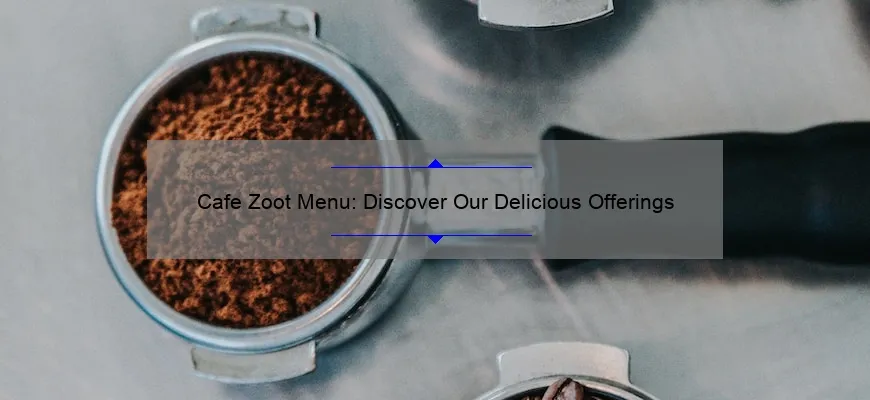Short answer cafe definition:
A café is a type of restaurant or eatery that primarily serves coffee drinks, light meals, and snacks. It originated in Europe in the 19th century as a venue for socializing over coffee and has since spread worldwide. In addition to beverages and food items, some cafes may offer alcohol, music, books, art exhibits, board games, or other cultural attractions.
How to Define a Cafe? A Step-by-Step Guide
Cafes are wonderful places where you can enjoy a cup of coffee, catch up with friends and get some work done. But what exactly is a cafe?
Defining a Cafe
A cafe, also known as a coffeehouse or coffee shop, is an establishment that serves hot beverages (coffee, tea, hot chocolate), cold drinks (soda, bottled water) and light meals such as pastries, sandwiches and salads.
Step-by-Step Guide to Defining a Cafe
1. Location: A cafe should be situated in an easily accessible location that attracts foot traffic.
2. Ambiance: The ambiance sets the mood for your customers. It’s essential to create a comfortable environment with soft music playing in the background and adequate lighting.
3. Menu: Your menu is the main attraction of your cafe, so it needs to provide variety while focusing on quality ingredients.
4. Customer Service: Customers want exceptional service when they visit your café; therefore hiring staff who are friendly and professional will make all the difference.
5. Seating Arrangements: Comfortable seating arrangements matched with tables conducive for working on laptops increases customer satisfaction levels at cafes immensely.
6.Regular Updates & Promotions – Engaging customers by offering new products/services/options guarantees return business from satisfied patrons of cafes
Final Thoughts
By following these steps you’ll have an excellent chance at creating successful cafes establishments across locations . Authenticity plays well here too alongside professionalism which makes sure that each aspect contributing towards defining this must steadily remain true throughout various aspects – over time.customer engagement through thoughts expressed via diverse mediums,sponsored activities etc , may eventually lead towards the creation of enduring community around local eats/cafés!
A Beginner’s Guide to the Cafe Definition: FAQ
Are you a coffee lover looking to step up your cafe vocabulary game? Do you find yourself nodding along when people mention their favorite types of brews, but secretly wishing you could join in on the conversation with confidence? Look no further, my caffeine-seeking friend. This beginner’s guide to the cafe definition FAQ (frequently asked questions) has got you covered.
Let’s start with the basics: what is a cafe? In simplest terms, it’s an establishment that serves coffee and other beverages alongside food items such as pastries or sandwiches. But not all cafes are created equal – depending on where you are in the world, they can have different vibes and offerings.
For example, in Italy, cafes (or “caffes” as they’re commonly known) might be small espresso bars where locals sip strong shots standing up at the counter. In France, cafes often include outdoor seating areas perfect for people-watching while sipping a cappuccino.
Speaking of cappuccinos – what exactly is this classic Italian drink? A cappuccino is made from one-third espresso, one-third steamed milk and one-third foam. It’s typically served in a smaller cup than its latte cousin and can be enjoyed any time of day (except according to some purists who believe it should only be consumed before noon).
And what about lattes? Lattes are similar to cappuccinos but contain more milk and less foam. They also tend to be sweeter since many baristas will add flavored syrups like vanilla or caramel.
If black coffee is more your style, there are still plenty of options beyond simply ordering a “coffee.” For example:
– Americano: Espresso diluted with hot water
– Pour-over: Hot water poured over freshly ground beans placed in a filter
– Cold brew: Coffee brewed slowly over several hours using cold water
Once you’ve mastered these basic coffee drinks, you can start exploring more obscure-sounding options like a cortado (a Spanish drink made of equal parts espresso and steamed milk) or a flat white (a New Zealand-originated beverage with textured milk poured over a double shot of espresso).
But what about the food offerings at cafes? If you’ve only ever ordered a pastry or bagel to go alongside your drink, it might be time to try something new. Depending on where you are, cafes can offer meals ranging from breakfast sandwiches to avocado toast.
One trend that’s been popular in recent years is “bulletproof” coffee – usually consisting of black coffee blended with butter and/or coconut oil. Fans claim it gives them sustained energy without the crash that can come from sugary drinks.
So there you have it – a beginner’s guide to cafe definitions FAQ. Armed with this knowledge, you’ll be able to confidently order any type of coffee or food item off the menu next time you visit your local cafe. Happy sipping!
Everything You Need to Know About The Cafe Definition
When you think of a cafe, what comes to mind? Perhaps a cozy little spot with comfortable seating arrangements and warm lighting. Maybe the smell of freshly brewed coffee or baked goods fills your nostrils as soon as you walk in. Alternatively, it could be an open space adorned with minimalist decor for people who enjoy working while sipping on their favorite beverages.
Whatever image comes to mind when thinking about cafes, there is no denying that they have become a cultural trend all around the world; whether you are in Paris or New York City. But what exactly defines a cafe?
The term “cafe” originates from France and was first used during the 18th century to describe small shops that sold basic items like tobacco and sweets through counters facing outside streets. However, today’s definition consists of far more than just selling cigarettes and candy bars.
A Cafe can now broadly refer to any eating establishment that serves coffee along with other drinks and light meals such as snacks or desserts – but not necessarily full meals like restaurants do. They also tend to offer free wifi so customers can work remotely or catch up online over caffeine-infused beverages at their leisure without feeling rushed.
We typically see two different types of Cafes: Independent Cafes (also known as Mom-and-Pop) which are often family-owned businesses, serving locally sourced foods and featuring unique recipes specific only to them. Meanwhile Chain-cafés/franchises may follow similar menus across multiple locations globally.
While defining cafes based on menu alone may seem pretty simple- its worth noting some additional factors contribute significantly towards the definition:
Ambiance
Most people go into a Café for a relaxing break from their daily lives – many visit solely because they find solace simply sitting among strangers enjoying this common ritual together exchanging pleasantries/conversations if mood allows! Hence, ambiance/playlists should be carefully curated/balanced by owners/managers catering toward creating & maintaining a relaxed environment encouraging people to unwind.
Location
Cafes can be found almost everywhere when you think about it; Paris, New York City, Tokyo – you name it! They are usually situated in neighborhoods or close to busy streets within city centres. The location should ideally offer easy reachability by public transport and the surrounding area must support relaxed vibes enhancing overall ambience for customers
Menu Offered:
It’s vital that cafes keep themselves updated with trending trends to cater more effectively toward customer demands. With new varieties innovated into drinks & food options frequently popping up on social media – staff training sessions become important, allowing baristas/chefs to best serve customers spanning their preferences from a classic espresso shot served Portuguese style (latte) through chocolate cookies matched with customised hot choco or frappuccino with alternative plant-based milk.
To sum it up,
The Café happens to be an institution of its own, managing services at different levels: as a coffee shop selling brewed beans & delicacies- encouraging small talk between friends or strangers alike while providing free WIFI connectivity; and also catering towards working








